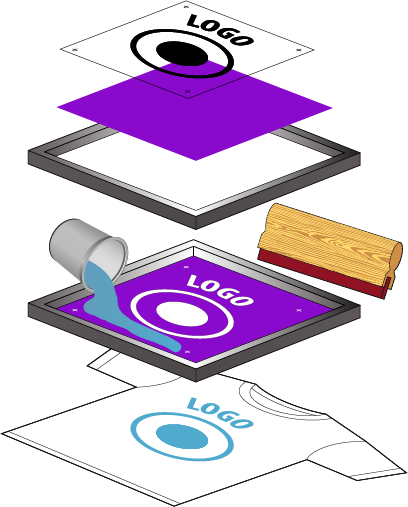Screen printing is the best technique for garments printing. What is screen printing? You will find the anwser and useful information below.
-

-
Screen printing
Screen printing is a printing technique that uses a stencil (called screen) to transfer ink on a substrate (t-shirt, tank top, etc.). Several screens can be used to produce a multicolor print, with the help of a multicolor screen printing press.
Why choose screen printing?
At Gold Hats, we have chosen screen printing as it is the printing technique that gives the best results. It allows for crisp and opaque colors, sharpness as well as high quality, long-lasting and durable prints.
Files to provide
Whatever the printing technique you are using, a good file is the starting point. This is true with screen printing too. Screen printing isn’t an exception.
Bear in mind the following when preparing your files:
- vector format (AI, EPS or PDF) or high res 300 DPI (PSD, TIF, JPG, PNG, etc.)
- convert all texts to paths
- design should be sized to print
Sounds like a foreign language? no problem, we are here to accompany you!
Limitations of Screen Printing
Artwords made of plain colors are the most suitable for screen printing. Thatis why we don’t print gradients for the moments.
Because of the set-up involved with screen printing, minimum order quantity is 12 pieces per artwork.
Screen printing is the result of three steps
-
1. Film positive
The artwork to be printed is printed on a film positive. If the artwork is made of several colors, they need to be separated, after which one film positive per color is printed.
2. Screen burning
An aluminium screen stretched with polyester screen printing mesh that has been coated with a light-sensitive emulsion is exposed to a light source; the film positive is placed between the screen and the light source in order to block the light from reaching the sensitized emulsion. Light passes through the clear portions of the film, exposing the emulsion underneath and thus hardening it. The exposed screen is then washed to stop the reaction and remove the emulsion in areas which did not receive light, resulting in a stencil.
3. Printing
The screen is fixed to the press and ink is placed on top of the screen while the substrate (t-shirt, sweatshirt, etc.) is placed on a pallet underneath. With a squeege, ink is applied to the t-shirt. This step is repeated for each color. Finally, the substrate is dried in a drying tunnel.
-

